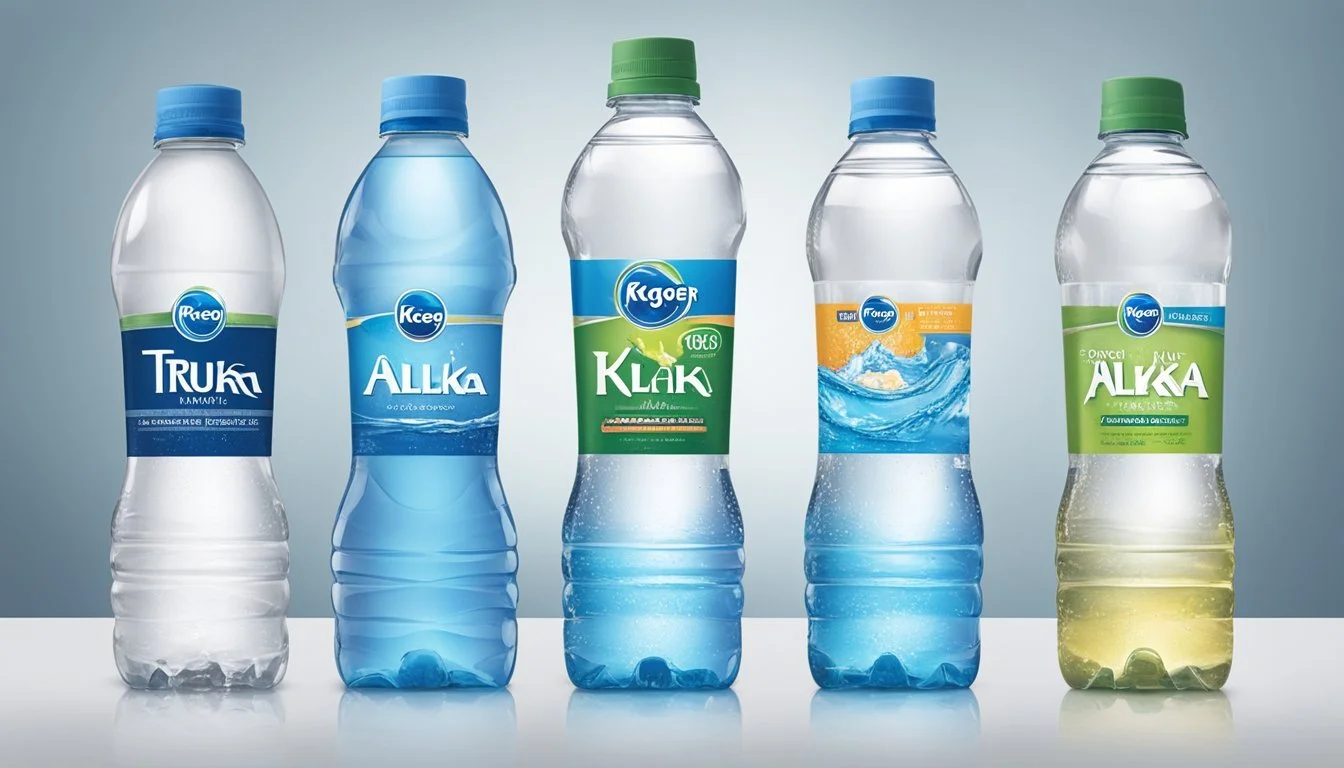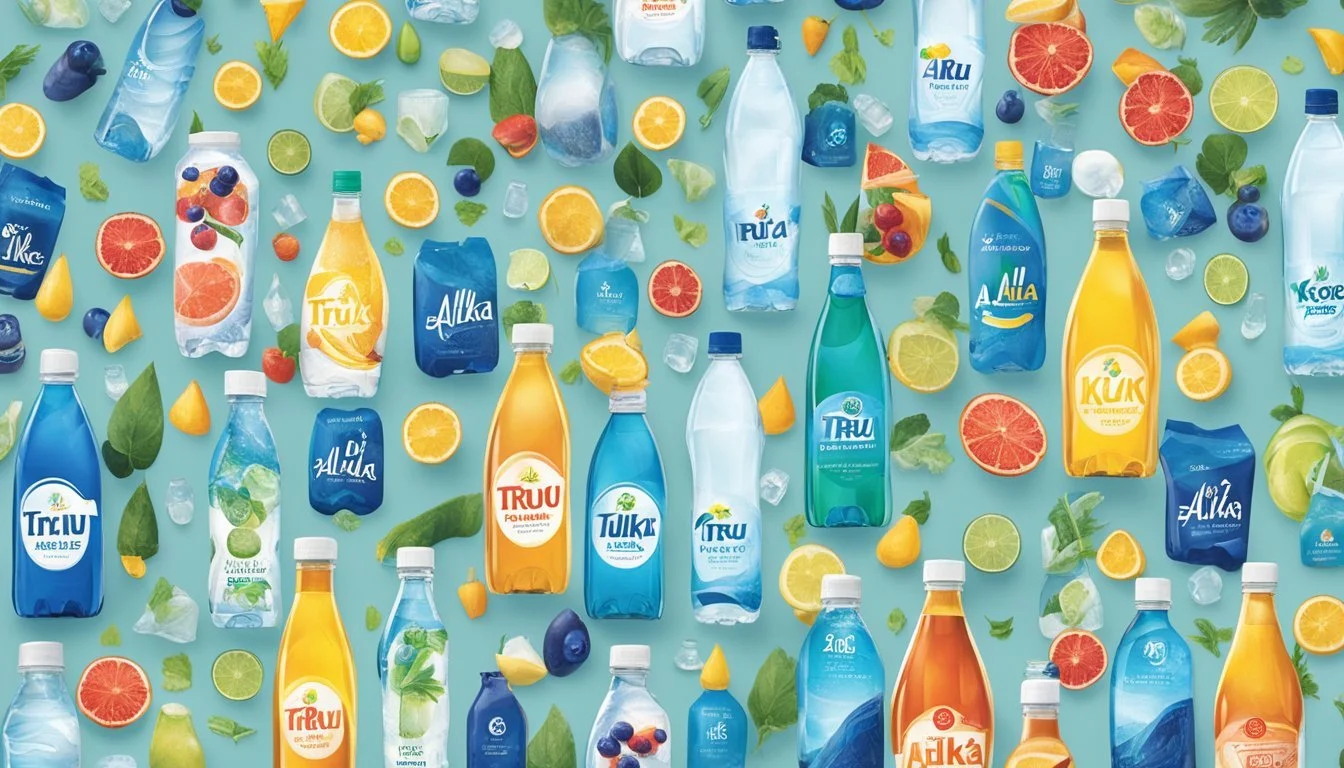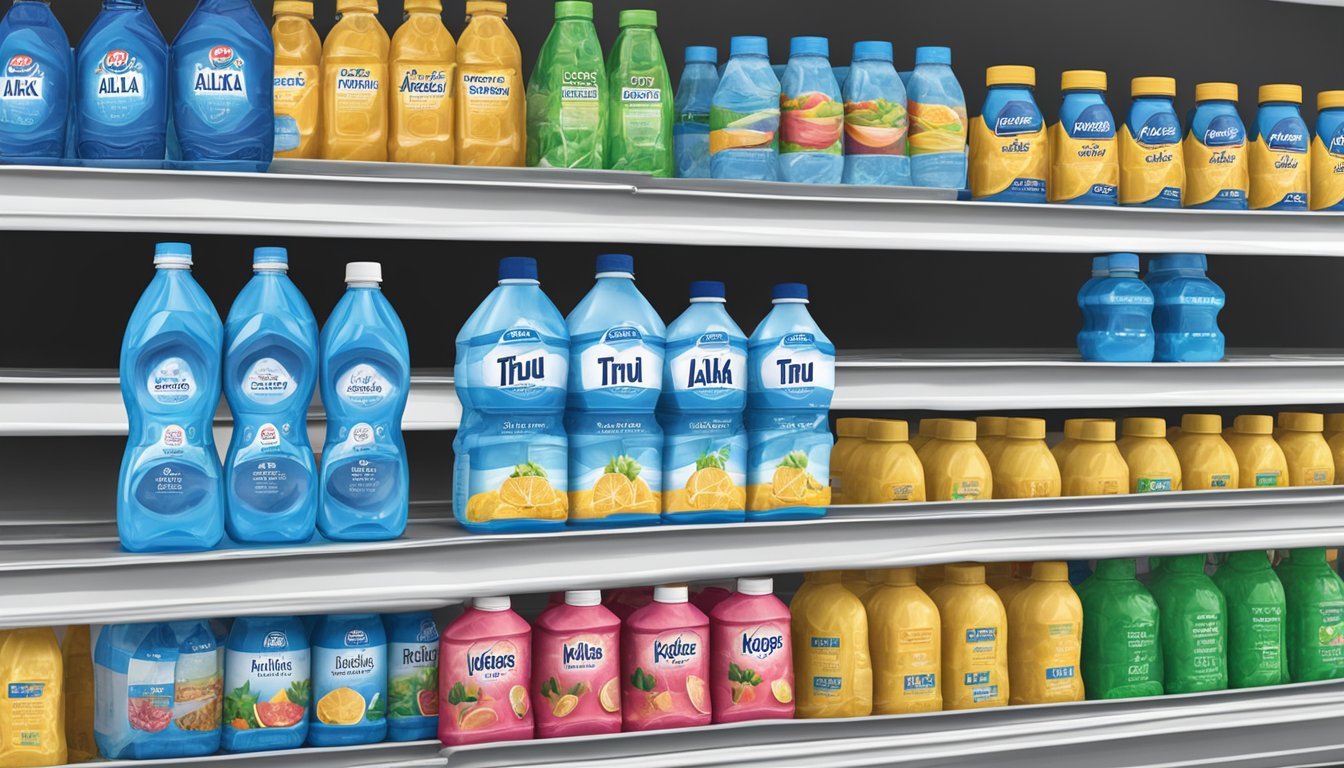Tru Alka vs. Kroger
Comparing Bottled Water Quality and Value
When choosing bottled water, consumers often find themselves weighing options between brands like Tru Alka and Kroger. Tru Alka stands out for its premium alkaline nature, boasting a pH level around 9 to 10, which is believed to help neutralize body acidity and provide hydration benefits. Enriched with added minerals and electrolytes, Tru Alka water aims to support various aspects of health, including muscle function and fluid balance.
On the other hand, Kroger bottled water adheres to FDA regulations, ensuring safety and quality. However, concerns over potential contaminants like microplastics and environmental impacts of plastic waste persist. Despite these issues, many consumers appreciate its affordability and widespread availability.
Given these key differences, the choice between Tru Alka and Kroger bottled water ultimately comes down to individual priorities regarding health benefits, cost, and environmental considerations. The rest of the article will explore these aspects in greater detail to help you make an informed decision.
Overview of Tru Alka and Kroger Bottled Water
Tru Alka emphasizes its bottled water's alkaline nature, aiming to offer enhanced hydration through high pH levels, typically around 9.5 or higher. They position their product as beneficial for balancing the body's pH.
Tru Alka's rigorous purification process removes impurities and adds essential minerals. This ensures the water remains pure and provides potential health benefits.
Kroger bottled water adheres to FDA regulations, ensuring safety and quality standards. Available in many grocery stores, Kroger's bottled water offers a convenient and reliable option for daily hydration.
Contaminants like microplastics and BPA have been a concern. However, many Kroger bottles are now BPA-free, addressing some of these worries.
Feature Tru Alka Kroger pH Level High (around 9.5) Neutral Purification Rigorous with added minerals Compliance with FDA standards Health Focus Balances body's pH Safe daily hydration Availability Select retailers Widely available in grocery stores Packaging Emphasis on purity Some concerns over microplastics
Tru Alka aims to differentiate itself through alkaline benefits. Kroger, on the other hand, focuses on being a standard, safe, and accessible choice.
Assessing Water Quality and Purity
When comparing Tru Alka and Kroger bottled water, examining sources, filtration methods, and mineral content helps determine which is the better option in terms of quality and health benefits.
Sources and Origin of Water
Tru Alka sources its water from natural springs, ensuring a clean and natural origin. Natural spring water is often celebrated for its purity and mineral richness.
Kroger's bottled water, on the other hand, may come from various sources, including municipal tap water. This can introduce variability in water quality. Municipal sources are subject to EPA regulations, which mandate acceptable limits for contaminants.
The origin of the water is crucial, as spring water typically contains natural minerals whereas tap water is more likely to have undergone significant treatment to remove impurities.
Filtration and Purification Processes
Tru Alka employs advanced filtration methods, including reverse osmosis and natural filtration. These processes remove contaminants like lead and heavy metals, resulting in high purity. Additionally, Tru Alka may use alkalizing filters to increase the water's pH, making it alkaline water.
Kroger's bottled water undergoes standard purification processes such as reverse osmosis, carbon filtration, and UV treatment. These methods efficiently eliminate bacteria and contaminants. However, the process can also strip away beneficial minerals.
The extent of filtration impacts taste and purity. Tru Alka's natural filtration methods may retain more minerals, potentially offering better taste and additional health benefits.
Mineral Content and Health Benefits
Tru Alka's natural spring water contains essential minerals like magnesium, calcium, and potassium. These minerals support bone health and muscle function. Alkaline water from Tru Alka can also help neutralize stomach acid, providing digestive health benefits.
Kroger's water, while purified, often lacks the mineral content found in natural spring water. This decreases the health benefits associated with regular mineral intake. Some of Kroger's bottled options might include added minerals, but the overall content can be less consistent.
Consumers seeking specific health benefits should consider the mineral content. Tru Alka offers a more consistent supply of essential minerals, enhancing its appeal for those focused on hydration and wellness.
PH Level Analysis
The pH level of drinking water plays a crucial role in determining its taste and health effects. This section assesses the pH levels of Tru Alka and Kroger bottled waters and highlights their impacts on consumer well-being.
Importance of PH in Drinking Water
pH is a measure of how acidic or basic a water sample is, on a scale from 0 to 14. Water with a neutral pH is 7, while pH levels below 7 indicate acidity, and levels above 7 signify alkalinity. Consuming water with balanced pH levels is essential for maintaining optimal health.
Alkaline water, with a high pH, can help neutralize acid in the body, potentially benefiting those with acid reflux issues. It often contains ionic and essential minerals absent in standard drinking water. However, water should ideally have a pH range of 6.5 to 8.5, ensuring it's neither too acidic nor too alkaline for daily consumption.
Comparing the PH of Tru Alka and Kroger Water
Tru Alka is marketed as a premium alkaline water with a pH level around 9.5. This higher pH can aid in neutralizing acid, contributing to a more balanced pH level in the bloodstream. Additionally, Tru Alka is known for its ionization process, which further enhances its alkalinity.
Kroger bottled water, on the other hand, typically maintains a standard pH level close to neutral (7). This makes it a good choice for general hydration without the specific benefits of alkaline water. Kroger water may lack the enhanced alkalinity and ionization processes found in Tru Alka but remains a reliable option for everyday drinking.
In summary, while Tru Alka offers specific health benefits with its high pH levels and alkaline properties, Kroger provides a balanced and straightforward hydration solution.
Taste Profile
Both Tru Alka and Kroger bottled water offer distinct taste profiles, influenced by their sources and mineral content. This section explores the factors affecting water taste and consumer preferences.
Factors Influencing Water Taste
The taste of bottled water can vary significantly due to its mineral content and source. Tru Alka, known for its alkaline properties, often presents a subtle, mineral-rich flavor with a smooth mouthfeel.
In contrast, Kroger's offerings, typically sourced from municipal sources, might have a more neutral taste with less pronounced minerals. Mineral content such as calcium and magnesium play a key role in water taste, contributing to the overall palatability. The level of alkalinity in Tru Alka may appeal to those who prefer a vibrant, crisp flavor.
Glass packaging can also impact taste. It can prevent any potential contamination from plastic, maintaining the pure taste of water. Kroger, however, often uses PET plastic, which although convenient, may slightly alter the taste over time, impacting the overall drinking experience.
Consumer Preferences and Perceptions
Consumer preferences for bottled water taste can be highly subjective. Some individuals may prefer the alkaline taste and smooth mouthfeel of Tru Alka. This preference can often be attributed to the perceived health benefits associated with alkaline water.
Others might opt for the more readily available and cost-effective options like Kroger, valuing convenience over premium taste. A water sommelier might note that Tru Alka's flavor profile is more distinctive and pleasant for those with a refined palate.
Surveys often indicate that packaging impacts consumer perceptions. Glass bottles can enhance the drinking experience, making the water seem more premium. Plastic bottles, while convenient, may detract from the perceived quality. These differences in consumer perceptions highlight why taste and packaging are key factors in the bottled water market.
Packaging and Environmental Impact
Both Tru Alka and Kroger bottled water options have unique packaging that affects their sustainability and environmental impact. Evaluating the materials used and their recycling practices reveals important insights for eco-conscious consumers.
Material Choices for Bottles
Tru Alka primarily uses plastic bottles, which are lightweight and convenient. The plastic is often BPA-free, addressing some health concerns.
Kroger bottled water also uses plastic bottles made from recyclable materials. Some stores offer alternatives like glass bottles and boxed water, which are more environmentally friendly due to their lower carbon footprint.
Despite being recyclable, plastic bottles contribute significantly to plastic waste if not properly recycled, making material choice a critical factor.
Sustainability Practices and Carbon Footprint
Tru Alka and Kroger both implement various sustainability practices aimed at reducing their environmental impact. Tru Alka focuses on reducing its carbon footprint by optimizing transportation and manufacturing processes.
Kroger has initiatives to cut down on plastic usage and promotes recycling programs within their stores. Additionally, they are investing in renewable energy sources to power their facilities, further lowering their carbon emissions.
Both brands acknowledge the need for sustainable practices, yet the effectiveness and extent of their efforts may vary.
Impact of Bottled Water on Plastic Waste
The production and disposal of plastic bottles significantly impact plastic waste levels. Despite recycling programs, many bottles still end up in landfills or oceans.
Tru Alka bottles, while recyclable, can still contribute to this issue if not properly managed.
Kroger offers several eco-friendly alternatives like boxed water, reducing reliance on plastic. However, the availability of these alternatives might be limited to certain grocery stores.
The environmental toll of bottled water is an important consideration, driving the need for increased recycling and alternative packaging solutions.
Additional Health Considerations
Choosing between Tru Alka and Kroger bottled water involves understanding their impact on health. Important aspects include the presence of electrolytes, potential contaminants, and protective measures used in the purification process.
Electrolytes and Hydration
Tru Alka water is known for its high pH levels ranging from 9 to 10, which are achieved by adding electrolytes. These electrolytes can enhance hydration and provide health benefits such as improved muscle and nerve function. Kroger bottled water, while adhering to FDA standards, does not emphasize added electrolytes or a high pH. For individuals seeking better hydration and associated muscle and nerve function, Tru Alka may be the more beneficial choice due to its electrolyte content.
Presence of Chemicals and Heavy Metals
Both Tru Alka and Kroger bottled waters must meet EPA standards to ensure safety. Tru Alka often uses glass bottles, reducing the risk of chemicals like Bisphenol A (BPA) leaching into the water. Kroger bottled water has concerns over potential microplastics and BPA, although many bottles are now BPA-free. Testing for heavy metals is another aspect, with both brands required to limit their presence. Consumers prioritizing minimal chemical exposure might find Tru Alka’s glass bottles more reassuring.
Protection against Contaminants
The filtration and purification process is crucial for ensuring safe drinking water. Tru Alka utilizes advanced purification methods, which may include ultraviolet exposure and multi-stage filtration, enhancing its protection against contaminants. Kroger bottled water also adheres to standard purification practices, but details on their specific processes may be less emphasized. For those concerned with the highest levels of filtration and contaminant removal, Tru Alka’s detailed purification methods might offer greater peace of mind.
Brand History and Production Methods
Tru Alka and Kroger have unique backgrounds and distinct production methods. The history and techniques they use are essential for understanding what sets these bottled waters apart.
Tru Alka's Background and Production
Tru Alka promotes itself as an alkaline water brand. Originating in the United States, Tru Alka is known for its focus on health and wellness. The water undergoes a multi-step purification process.
Key methods include reverse osmosis, which forces water through a semi-permeable membrane, and ionization, which increases its pH level. This process creates water with a higher alkalinity, which some believe offers additional health benefits. The brand emphasizes its use of high-quality materials and sustainable production practices.
Kroger's Water Brand Evolution
Kroger, a well-known grocery retailer, offers its own line of bottled water. The brand's bottled water is sourced from multiple locations, ensuring widespread availability.
Kroger's production methods adhere to strict FDA regulations. The water is purified using techniques such as filtration and ozonation. The bottles, made from PET plastic, are designed to be recyclable. Kroger places a significant emphasis on practicality and affordability, while still ensuring safety and quality standards in their production process.
Market Comparison and Availability
The competition between Tru Alka and Kroger bottled water centers on price, consumer accessibility, and how they stack up against other popular water brands. Key considerations include cost differences and the diversity of retail locations where these waters are available.
Price Point and Consumer Accessibility
Tru Alka is generally positioned as a premium brand, often reflected in a higher price point due to its high pH level and glass bottle packaging. Consumers looking for alkaline water which may offer additional health benefits may find Tru Alka appealing despite its cost.
Kroger, a private label brand under the Kroger Company, offers a more competitively priced alternative. Available in numerous grocery stores across the U.S., Kroger bottled water provides affordability and convenience, making it a regular choice for households on a budget.
Comparison with Other Water Brands
Tru Alka’s primary standout feature is its high alkalinity, typically with a pH between 9 and 10, stored in glass bottles to maintain purity. This differentiates it from other premium brands like Voss and Fiji, which emphasize natural water sources but do not necessarily focus on alkalinity.
Kroger bottled water, on the other hand, competes more closely with mass-market brands such as Aquafina, Pure Life, and Dasani. While these brands are known for their reputability and broad market presence, Kroger’s competitive edge lies in its widespread availability in Kroger-owned stores and its cost-effectiveness.
Both brands cater to specific consumer needs—Tru Alka for specialized health preferences and Kroger for budget-conscious buyers seeking quality water at an accessible price point.
More About Tru Alka
Hawaiian Springs vs Tru Alka: Which Bottled Water is Better?
Icelandic Glacial vs Tru Alka: Which Bottled Water is Better?
Mountain Valley Spring Water vs Tru Alka: Which Bottled Water is Better?
Nestle Pure Life vs Tru Alka: Which Bottled Water is Better?
Tru Alka vs Cascade Mountain: Which Bottled Water is Better?
Tru Alka vs Kirkland Signature: Which Bottled Water is Better?
Tru Alka vs Richard's Rainwater: Which Bottled Water is Better?
Tru Alka vs Talking Rain AQA: Which Bottled Water is Better?
Tru Alka vs Whole Foods Italian Still Mineral water: Which Bottled Water is Better?









